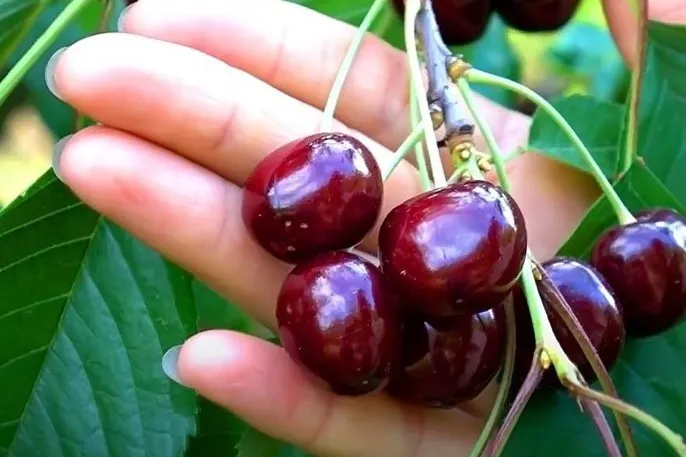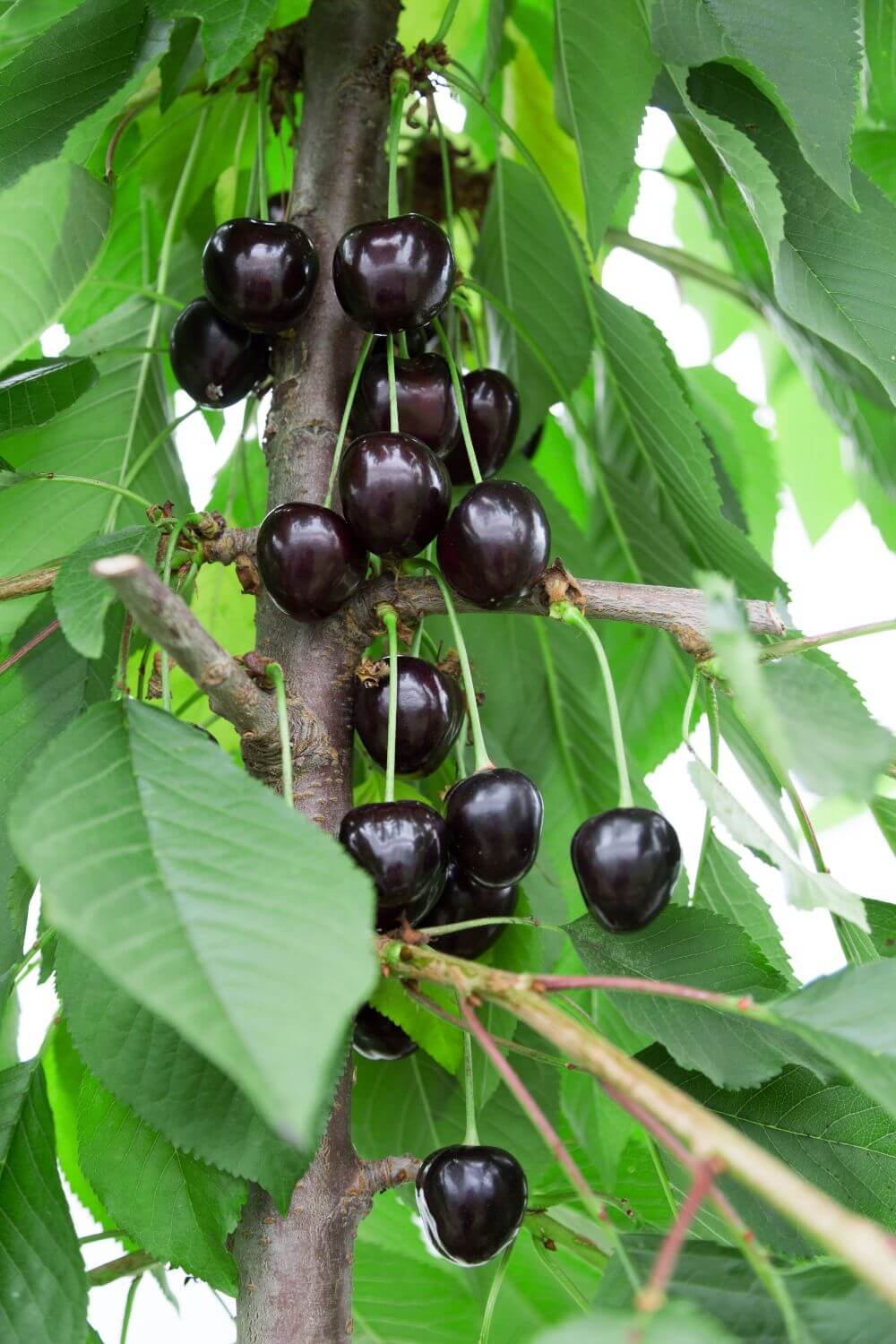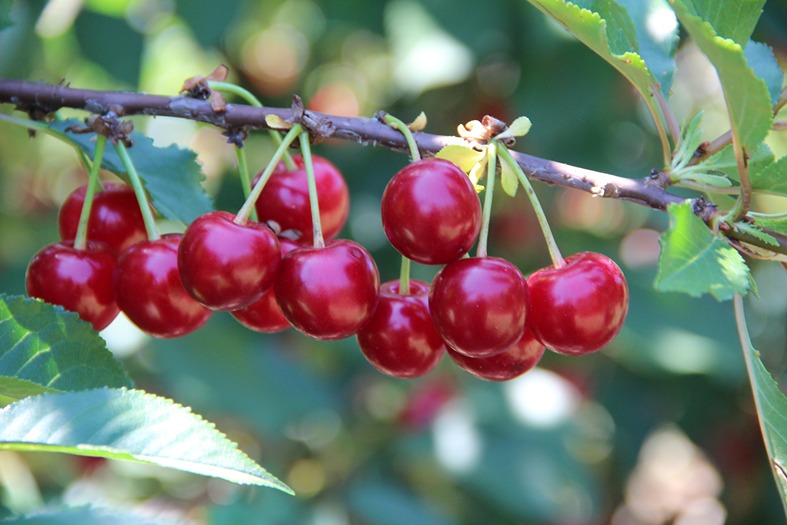The sweet cherry has always been one of the best plants of the South. This tree, with its spreading crown, provided shade in conditions of extreme heat and produced abundant large and sweet fruits.
Thanks to farmers, this wonderful plant gradually began to migrate towards more northern regions. Today, many gardeners all across Russia grow cherry trees in their gardens.

Preparation for cultivation
The first to begin the “northernization” of the cherry tree was Ivan Vladimirovich Michurin at the end of the 19th century. In the city of Kozlov, in the Tambov region (today called Michurinsk in honor of the great scientist), Ivan Vladimirovich created unique cherry varieties for that time, starting from the hardiest seedlings from Western Europe and southern Russia.
They were named First Swallow, Firstborn, Kozlovskaya. Although they were quite cold-resistant, their fruits were not very tasty and therefore did not spread widely. However, for many years they served as the main starting material for further research into breeding winter-hardy cherries.
Variety selection
Before the beginning of the Great Patriotic War, Doctor of Biological Sciences F.K. Teterev was intensively engaged in breeding winter-hardy cherries under northwestern conditions. He worked at the Pavlovsk Experimental Station of VIR, near Leningrad.
His most famous varieties are Leningrad Yellow, Dense Red, and Zorka. These survived the harsh winters and are still carefully cultivated today in the Leningrad region. However, the fruits are rather small, not excellent in taste, and harvest is not always annual.
The varieties developed by Doctor of Agricultural Sciences Maina Vladimirovna Kanshina and her colleagues, on the other hand, gained great popularity throughout Russia. Maina Vladimirovna is a key figure in modern cherry breeding for non-traditional growing regions.
She works at the All-Russian Research Institute of Lupin in the Bryansk region, where a huge collection of different northern cherry varieties and forms has been gathered. Kanshina’s varieties have been successfully zoned and grow in orchards not only in the central region, but also in the southern Urals and Siberia.
Frost resistance
However, it should be noted that these varieties were bred in the Bryansk region, so farther north they may suffer frost damage in particularly harsh winters.
It is important to remember that winter hardiness of trees and of flower buds do not always coincide. For example, the Dense Red variety has high winter hardiness of buds, but poor winter hardiness of the tree.
Among the varieties considered the most winter-hardy, which showed only a minimal percentage of frost damage during the harshest periods both on wood and buds, are: Audrinka, Revna, Ovstuzhenka, Bryansk Rose, Veda.
Kanshina’s varieties are today grown by amateur gardeners all over Russia, including in the Novosibirsk and Chelyabinsk regions.
Regional experiences
An amateur grower from Chelyabinsk, for example, reported being very satisfied with the varieties Tyutchevka, Ovstuzhenka, and Bryanochka, which after frosts of -38/-39 °C (about -36/-38 °F) flowered and bore fruit.
In the Republic of Khakassia (city of Abakan), after strong alternations of thaws and frosts, the Bryansk Rose, Symphony, and Revna varieties survived and even produced a harvest.
The ones that adapted best in this area were cherries grafted onto antifilalanine rootstocks. These varieties also withstood a freezing winter (with temperatures dropping to -37 °C, about -35 °F), even if they did not produce fruit.
Good reviews come from Smolensk about the Bryansk Rose and Bryanochka varieties. In Moscow, Krasnaya Gorka and Pink Sunset also proved very frost-resistant.
Moscow hardy varieties
Currently, some of the hardiest cherries are considered to be those obtained by the Moscow breeder Anatoly Ivanovich Evstratov (VSTISP). His varieties are unsurpassed in terms of frost resistance.
Montazh and Chermashnaya (the latter in collaboration with H.K. Enikeev and N.G. Morozova) were zoned in the early 2000s. By origin, they derive from seedlings of Leningrad Yellow, developed by F.K. Teterev at the Pavlovsk VIR experimental station.
These varieties were obtained through a rigorous selection of thousands of hybrid seedlings. In addition to traditional methods, modern genetic improvement systems such as chemical and radiation mutagenesis were also used, which made it possible to obtain a very diverse offspring from which to select.
Thus were born cherry varieties whose winter hardiness is not inferior to that of the famous Vladimirskaya cherry. At the same time, they are productive plants, with large, sweet fruits of highly appreciated dessert taste, and trees resistant not only to cold but also to various fungal diseases.
Cold resistance tests
It is worth going into detail. Common southern cherry varieties can withstand down to -29 °C (about -20 °F), while dormant buds resist down to -25 °C (about -13 °F). This means that even in central Russia they suffer severe damage, not to mention northern regions: in practice, no fruit is harvested.
The best northern varieties, cultivated in the regions of Leningrad, Moscow, Bryansk, and Oryol, withstand temperatures gradually falling to -34 °C (about -29 °F). However, the problem is that in some winters temperatures can drop even lower and alternate with thawing periods.
At such times the cherry trees begin to awaken their buds, which then die when the frost returns.
For decades, the well-known agronomist V.I. Susov conducted in-depth research at the Michurinsky Garden of the Timiryazev Agricultural Academy in Moscow. For 33 years he studied the resistance and winter hardiness of 27 cherry varieties. Only two received the highest rating: Montazh and Chermashnaya, both from Moscow breeding.
Experiments in the north
Some Bryansk varieties showed slightly lower resistance (Ovstuzhenka, Tyutchevka, Rechitsa), but even these flowered and bore fruit every year. However, it should be noted that the Michurinsky Garden is located in the center of a large city, characterized by a special microclimate, influenced by nearby buildings and industrial plants.
Here temperatures are always a few degrees higher than in the surrounding region, more similar to those of the Tula area.
Further trials were conducted farther north, near Vologda. For 15 years varieties such as Montazh, Chermashnaya, and Bryansk varieties were grown. The tests showed that the cherry is not entirely comfortable in such harsh climates.
Some years the trees did well, producing good harvests, while in other cases the crown above the snow layer froze. In such severe conditions the cherry can grow only in creeping form, with additional winter protection.
Care in cold climates
Even if it seems that the cherry cannot grow in your region, there is no need to despair. You can try, provided you choose a good microclimate in which the tree feels protected.
It is important to minimize stress: in March-April, for example, the sun is very strong and the cherry suffers more from sunburn than from frost. For this reason, it is essential to carefully whitewash the trunks, forks, and main branches with modern lime that is not washed away by rain or snow.
For easier management, do not let cherry trees grow to 5–7 meters as they do in the South. It is necessary to perform crown formation work: shorten the main branches by about a quarter and, in summer, bend vertically growing shoots horizontally.
There are also varieties grafted onto clonal rootstocks (developed by breeders from Moscow and Oryol) that ensure smaller trees.
One of the most vulnerable points of the cherry is the loss of flower buds, which can compromise the entire harvest. Buds freeze more often at the beginning or end of winter. Among the most resistant are those of the varieties Tyutchevka, Montazh, Orlovskaya Rose, Audrinka.
Site selection and pollinators
Cherries should not be planted in low areas or near groundwater, otherwise the tree will quickly die due to cold fogs, branch freezing, and waterlogging.
If, on the other hand, you have a raised, sunny area, that is where the cherry tree will grow best.
The cherry is a “greedy” plant, quickly absorbing nutrients from the soil. Therefore, the planting hole should be prepared with fertile soil, compost, and fertilizers. After two years, regular fertilization is necessary.
Preventive treatments against moniliosis and coccomycosis are also essential, diseases that affect both sour and sweet cherries.
It should be remembered that the cherry belongs to self-incompatible species: to bear fruit it requires pollinator varieties. Often gardeners plant a single “test” tree, thinking of adding another later.
The result is wasted years. The cherry grows quickly and begins to produce from the fourth year, but if there are no other compatible varieties nearby it will not bear fruit, except for a few isolated berries.
The common mistake is to think it can be pollinated by sour cherries: it cannot.
Therefore, it is advisable to immediately buy two or three different cherry varieties. For most varieties, the best pollinators are Revna, Tyutchevka, and Ovstuzhenka.
It is important to think carefully about the planting site, and sometimes it may be necessary to reorganize the garden to reserve a warm, sunny space for the cherry.
Experiments with Cherry Trees
Personal Growing Experience
To conclude, I will share my experience. I own a plot in the Moscow region, Solnechnogorsk district, and for 7 years I have been trying to grow cherries. I planted the Moscow varieties Fatezh and Chermashnaya.
From the St. Petersburg side I grow Leningrad Black, one of the best varieties in my plot: the most frost-resistant, producing beautiful black fruits, sweet and slightly tart.
And of course, the famous Bryansk varieties could not be missing: Ovstuzhenka (which is also an excellent pollinator for all cherries), Revna, Iput, Leader.
In the harshest winters there was frost damage and no harvests, but in other years the trees have been very rewarding. That’s why I believe it is still worth cultivating them.
Today I continue the experiment: I have grafted cherry varieties onto the crowns of winter-hardy cherries such as Vladimirskaya and Shubinka. So far so good: the branches do not freeze and produce harvests. However, the rootstock also affects the behavior of the graft.
The plan is to collect seeds from the most winter-hardy trees and sow them, selecting among the seedlings those most frost-tolerant. This way cold resistance increases, but it is important that they also produce quality fruit. Time will tell.
New Winter-Hardy Cherries 2025
Samara Cherry Varieties
| Variety | Ripening time | Fruit weight (g) | Fruit color | Taste | Cold resistance | Disease resistance |
|---|
| Liza | Mid-season | 6 | Yellow | Sweet-bitter | Down to -39 °C (about -38 °F) | Low susceptibility to moniliosis, cherry elephant, cherry fly |
| Niusha | Early | 3 | Dark red | Sweet-sour, spicy | Down to -34 °C (about -29 °F) | Low susceptibility to moniliosis, cherry elephant |
| Olechka | Mid-season | 5.8 | Yellow with pink shades | Sweet-bitter | Down to -34 °C (about -29 °F) | Low susceptibility to moniliosis, cherry elephant, cherry fly |
Northern cherries really do exist! Varieties like Montazh and Chermashnaya endure harsh winters and produce tasty fruits even in the Moscow region.
Without pollinator varieties there will be no harvest. It is necessary to plant 2–3 compatible trees right away.
Care is fundamental: whitewashing, training pruning, and fertilization help the tree withstand the cold.
The new Samara 2025 varieties, such as Liza, seem promising, especially for those seeking plants more resistant to diseases.
Share Your Experience
Growing cherries in northern regions is a challenge, but it’s worth it! If you already have experience or are planning to plant cherries, share your stories in the comments on our website or on the Telegram channel Garden, Country House, and Vegetable Patch.
And don’t forget to share the article with your friends: maybe they too dream of having their own cherry tree. Good luck, gardeners, and may your trees delight you with juicy berries!
Frequently Asked Questions
Which cherry varieties are the most frost-resistant?
The best for the North are Montazh, Chermashnaya, Ovstuzhenka, Revna. They can withstand frosts down to -34 °C (about -29 °F), and some varieties like Liza even down to -39 °C (about -38 °F).
Does a cherry tree need a pollinator variety?
Yes. The cherry is a self-incompatible species. Without a pollinator (for example Revna or Tyutchevka) there will be no harvest. It is necessary to plant 2 or 3 varieties together.
How to protect cherries from frost?
Whitewash trunks to avoid sunburn, train trees to grow low, and choose elevated soils without shallow groundwater.
Is it possible to grow cherries in Vologda?
Difficult, but possible. Varieties like Montazh and Chermashnaya can bear fruit if grown in creeping form and protected during winter.
Text and image source: vsaduidoma.com
Cherry Times - All rights reserved













